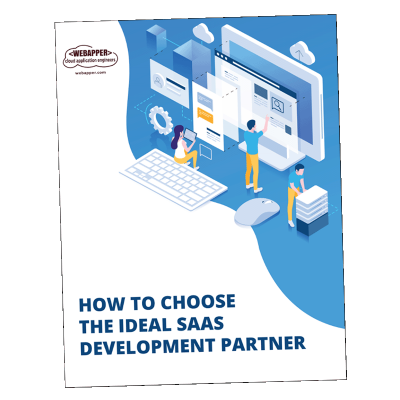The Rise of Mobile-First SaaS
In SaaS, it’s apparent that most products are developed for desktop first. Given the nature of our hybrid work environment today, many tech experts predict that mobile apps will become increasingly dominant. That is, mobile has become the primary interface for workers, getting real work done using a smartphone. A mobile-first SaaS approach means addressing the needs of mobile users from the beginning, rather than ‘dumbing down’ a desktop feature set to fit on mobile devices like smartphones and tablets. To provide a seamless, user-friendly experience on mobile devices, mobile-first SaaS developers must optimize for smaller screens, touch inputs, and mobile-specific requirements. SaaS businesses that fail to offer mobile-friendly solutions risk losing customers and falling behind their competitors. We see a significant growth opportunity for mobile-first SaaS products.
The Mobile SaaS Market
Surveys show that a third of mobile SaaS start-ups address specific industries in sectors like real estate, construction, and healthcare. Zion Market Research estimated the 2020 global mobile SaaS market value at over $15 billion, growing to $35 billion by 2028 with a CAGR of over 10%. Rising demand for cloud-based services coupled with increasing adoption of mobile devices fuel this growth in mobile-first SaaS solutions. Mobile-first SaaS is a competitive market that includes both heavyweights and startups vying for market share.
Examples of Mobile-First SaaS
We use a number of powerful apps daily that showcase a mobile-first approach.
Hopper
Hopper is a travel booking platform for booking flights and hotels.
Loom
Loom is a video messaging and screen recording tool for creating and sharing video messages.
Notion
Notion is a workspace for creating and collaborating on notes, tasks, and databases.
Calendly
Calendly offers a tool that for scheduling appointments and meetings.
Evernote
Evernote us a well-known app for capturing ideas and organizing notes on the go.
HubSpot Mobile App
Industy-leading CRM HubSpot offers a mobile app that allows businesses to manage their inbound marketing, sales, and customer service from their mobile devices.
Monday.com
Monday is a project management and collaboration mobile app that allows teams to track progress and communicate.
Xero
Xero offers cloud-based accounting software for invoicing and managing finances.
Airtable
Airtable is a flexible database and project management app for tracking and collaborating on projects.
Gusto
Gusto is a payroll and HR management platform that offers mobile apps for managing employee payroll and benefits from a mobile device.
Figma
Figma offers a mobile app for creating and collaborating on designs.
Benefits of a Mobile-First SaaS Strategy
The benefits of a mobile-first SaaS strategy include:
Convenience
Mobile app users can save time and get work done even when on-the-go. Software is accessible to users anytime, anywhere, and on any device. Mobile app users can work in a flexible and remote environment, which can enable a better work-life balance and increase overall job satisfaction.
Improved User Experience
Mobile apps typically offer a streamlined and intuitive user experience. Optimizing for small screens and touch interfaces enhances user adoption and reduces frustration. With notifications and alerts, users remain engaged with the app and receive important information in real-time.
Scalability
Mobile SaaS solutions can be scaled up or down easily to meet the needs of the organization. Scalability helps manage costs and improve efficiency.
Competitive Advantage
By providing a mobile app that delivers value to customers, businesses can gain competitive advantage in their industry.
On the Flip Side…
Unless your SaaS product is expected to be used on-the-go, the ROI of building a mobile version will be low. Mobile app development is challenging — it requires additional investment in UX, connectivity, and security — and may not match existing IT skillsets.
The Rise of Mobile-First SaaS
Mobile SaaS enables users to access mission-critical applications from any device and location, which provides organizations with flexibility, scalability, and cost-effectiveness. Since they are cloud-based, updates can be rolled out quickly, providing users with the latest functionality. The future is bright. As mobile adoption grows, more businesses understand the need for mobile-first solutions that help them be more competitive. We expect to see more innovation too!



Leave A Comment